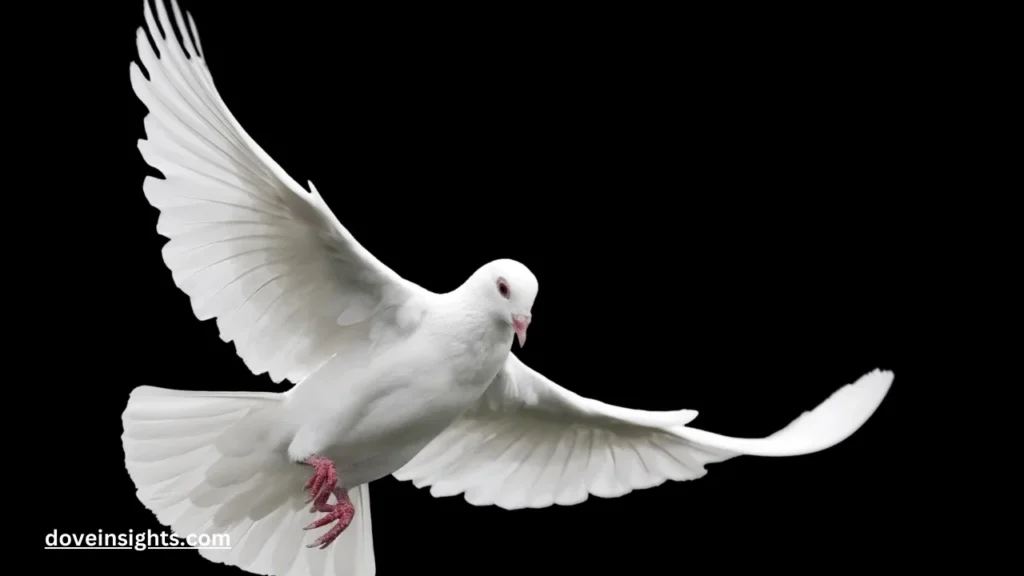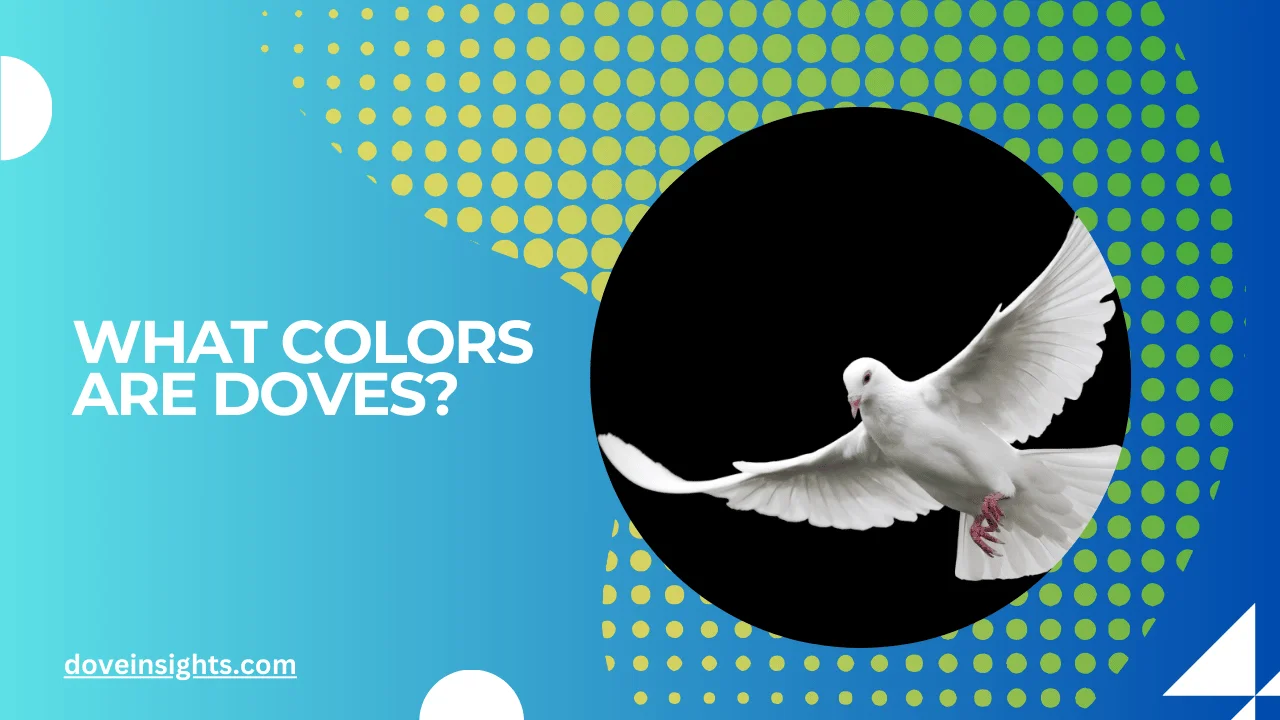Doves, with their graceful flight and soft coos, have long been symbols of peace, love, and hope.
Whether they flutter through the sky or perch peacefully on a windowsill, doves have a timeless presence in our lives. But have you ever stopped to wonder what colors these gentle birds actually come in?
While many of us associate doves with the traditional white image, the world of dove species is far more colorful and diverse than we might realize.
The color of a dove isn’t just a trivial detail; it often carries symbolic meanings and can even provide clues about the bird’s species, habitat, and behavior.
From the purest whites to rich grays and even shades of brown, doves showcase a stunning range of hues across their different species. But why does dove color matter? What do these colors represent, and how can understanding them help us appreciate these birds even more?
In this article, we’ll explore the various colors that doves come in and what each color might symbolize. We’ll also take a closer look at how dove colors relate to their biology, habitats, and cultural significance.
Whether you’re a bird enthusiast or someone curious about these peaceful creatures, this deep dive into dove colors will give you a whole new perspective on these beautiful birds. Let’s embark on this colorful journey and discover what hues the doves of the world wear.
Contents
The Common Color of Doves: White
When people think of doves, white is often the first color that comes to mind. The iconic white dove, often seen in ceremonies and peace symbols, represents purity, peace, and spirituality.
This color is most commonly associated with the rock dove (the wild ancestor of the domestic pigeon) and the mourning dove, among others. But why are white doves so commonly linked to peace and love?
White is often perceived as a symbol of purity and innocence in many cultures. In Christianity, for instance, the white dove is a symbol of the Holy Spirit, embodying divine presence and a peaceful spirit.
In ancient Greece, doves were associated with the goddess Aphrodite, the goddess of love, further cementing the white dove’s association with love and romantic ideals.
White doves, such as the ones released during weddings or ceremonial events, are often seen as a living embodiment of hope, freedom, and good fortune. While white may be the most iconic color for doves, it’s essential to recognize that their colors can vary widely depending on the species and their environment.
The More Common Colors: Gray and Brown
While white doves hold a special place in human culture, many wild species of doves sport more subtle shades of gray and brown.
These colors are often more reflective of the natural world in which doves live and serve practical purposes such as camouflage and adaptation to various environments.
The mourning dove is one of the most common species, sporting a soft gray-brown plumage. Its muted tones help it blend into the branches and trees where it roosts, offering a degree of protection from predators.
Mourning doves, like many wild birds, rely on their neutral colors to stay hidden while feeding or nesting. Their soft gray feathers may sometimes have a slight lavender or pinkish tint, depending on their geographic location and the specific subspecies.
The Eurasian collared dove, another widespread species, also has a soft grayish-brown color, with a distinctive black “collar” or crescent-shaped marking on its neck.
This color pattern helps the bird blend into urban and rural environments, where it is commonly found. Its brownish-gray plumage also gives it an earthy, grounded appearance that connects it to the natural world.
Brown and gray doves, unlike their white counterparts, symbolize a more earthy, humble form of peace, grounded in the reality of the natural world. While they may not carry the same romanticized symbolism as their white relatives, they still represent the quiet, steady forms of love, connection, and faithfulness.
Unique Dove Colors: Blue, Green, and Purple
While white, gray, and brown are the most commonly recognized dove colors, several species of doves feature more vibrant and iridescent hues. Doves from tropical regions, such as the Zebra dove or Victoria crowned pigeon, often display stunning shades of blue, green, and even purple.
The Victoria crowned pigeon, a native of New Guinea, is one of the most striking examples of a dove with an unusual color palette.
With its iridescent blue feathers and a distinctive crest of feathers on its head, the Victoria crowned pigeon stands out as one of the most beautiful and colorful species of dove. Its deep blue coloration, coupled with the soft luster of green and purple feathers, makes it a true marvel in the bird world.
Similarly, the green-winged dove from Southeast Asia features rich green feathers on its wings and back, often contrasted with more muted gray or brown body feathers.
The color green is symbolic of renewal, growth, and balance, suggesting that these doves are not only beautiful but also represent the cycles of nature and spiritual renewal.
The blue of some doves, such as the blue-headed dove, often symbolizes clarity, truth, and peaceful communication. It reminds us of the importance of maintaining peace through clear communication and honesty in our relationships and interactions.
The Role of Dove Colors in Camouflage and Survival
While many of the colors we associate with doves—especially the more vibrant shades—are symbolic, they also have practical purposes. The coloration of a dove often serves as an essential part of its survival strategy.
As mentioned earlier, the neutral tones of gray, brown, and white are especially common in wild dove species because they help them blend into their surroundings, providing essential camouflage against predators.
For example, the rock dove (or common pigeon) often appears in shades of gray, with some birds exhibiting a mix of blue-gray and black markings. This color pattern helps them blend into the rocky cliffs and city buildings they inhabit, offering protection from predators like hawks and falcons.
The mourning dove, with its pale gray and brown hues, can often be found perched in trees, fields, or on fences, making it difficult for predators to spot it amidst the branches. The dove’s ability to blend into its surroundings is critical for avoiding detection, especially during breeding and nesting seasons.
Interestingly, even the white dove, often associated with purity and peace, may be well-suited for specific environments where light-colored plumage can help it blend into snowy landscapes or open fields. The variations in dove color across species highlight the bird’s adaptability to its environment and its need for survival through camouflage and stealth.
The Symbolism and Cultural Significance of Dove Colors

Beyond their biological functions, the colors of doves are deeply intertwined with cultural and symbolic meanings. As mentioned earlier, the white dove is widely recognized as a symbol of peace, hope, and spiritual purity.
Its color is often associated with divine presence and purity in many religious traditions, from Christianity to indigenous spiritual beliefs.
In contrast, the more earthy tones of the mourning dove or rock dove evoke a sense of groundedness, loyalty, and steadfastness.
These doves symbolize a quiet, enduring kind of peace, one that is not flashy or immediately noticeable but rather steady and constant over time.
The vibrant colors of doves like the Victoria crowned pigeon or the green-winged dove suggest themes of growth, spirituality, and personal transformation. The richness of their hues can be seen as representing the multifaceted nature of life—beautiful, complex, and ever-changing.
Across many cultures, doves—regardless of their color—are revered as symbols of love and fidelity, and their colors only enhance these meanings.
The dove’s role in weddings, rituals, and celebrations highlights the way its color often enhances the message it carries. Whether white or brown, blue or green, the dove stands as a reminder of the quiet yet powerful forces of love, hope, and peace in the world.
Conclusion:
The colors of doves are more than just a matter of aesthetics—they represent the diversity and adaptability of these remarkable birds.
From the iconic white dove symbolizing peace and spirituality to the more muted tones of gray and brown reflecting grounded, natural beauty, each color carries its own unique meaning and symbolism.
As we’ve seen, the hues of doves are not just physical traits—they are an important part of their survival, their connection to the natural world, and their cultural significance.
Whether you’re observing a dove in flight or contemplating its deeper meaning, understanding the colors of doves can help us appreciate these birds even more. They are not only a symbol of peace and love but also a beautiful reminder of the diversity, resilience, and spiritual power found in nature.
FAQ’s
What is the most common color of a dove?
The most common color of a dove is gray or brown, with species like the mourning dove and rock dove commonly exhibiting these hues.
Why are white doves considered symbols of peace?
White doves are traditionally associated with purity, peace, and spirituality, making them a symbol of peace in many cultures, especially in Christianity.
Do all doves have white feathers?
No, not all doves are white. While some species, like the white-winged dove, may have primarily white feathers, most wild doves are gray, brown, or even iridescent shades of blue and green.
What do the colors of doves represent?
The colors of doves can symbolize peace, love, hope, loyalty, spiritual growth, and renewal, depending on the hue and cultural context.
Are there any colorful species of doves?
Yes, species like the Victoria crowned pigeon and the green-winged dove are known for their vibrant blue, green, and purple feathers.
What is the significance of the gray color in doves?
Gray is often associated with humility, groundedness, and steadfastness, symbolizing a quiet, enduring peace in both nature and relationships.








